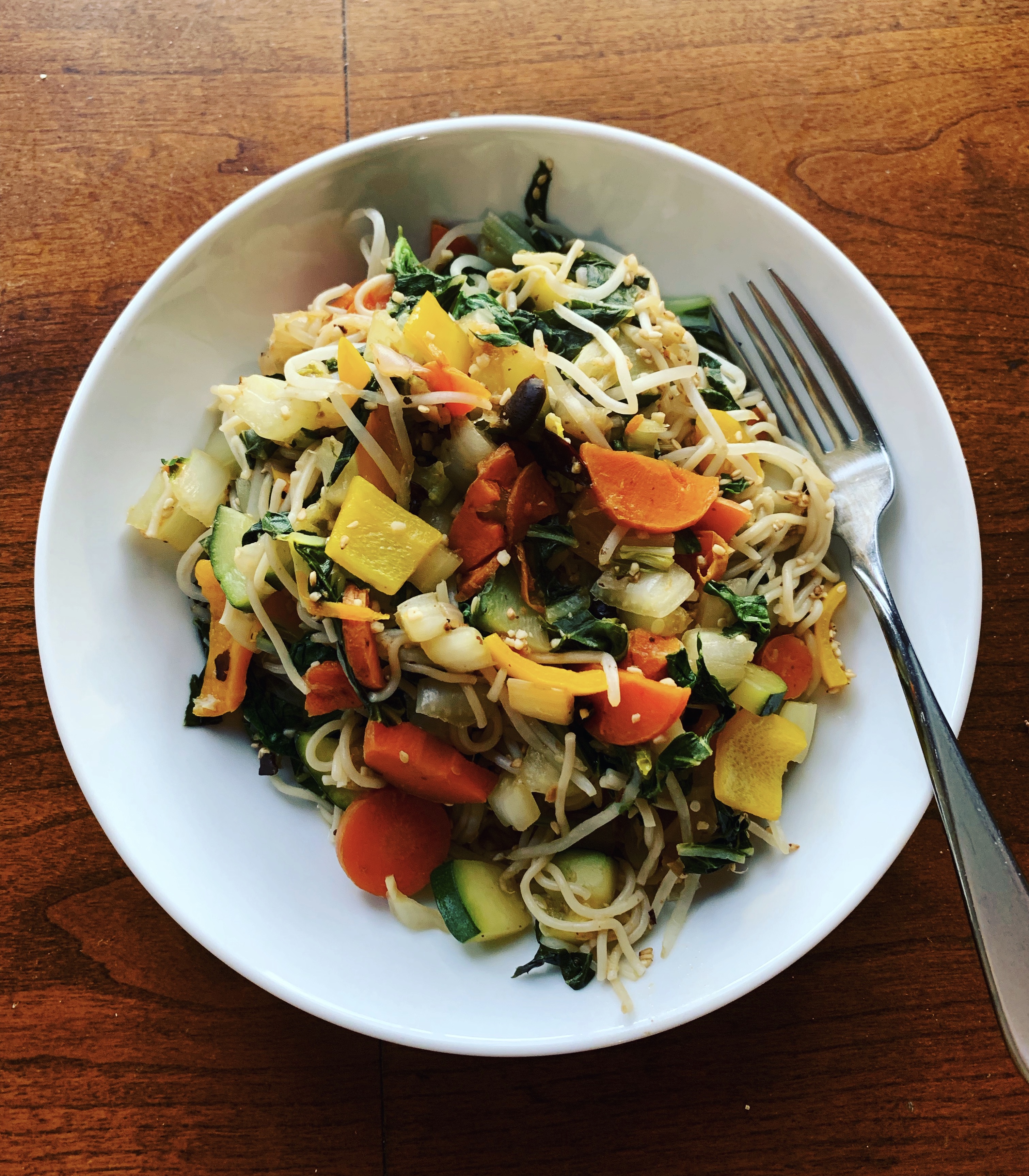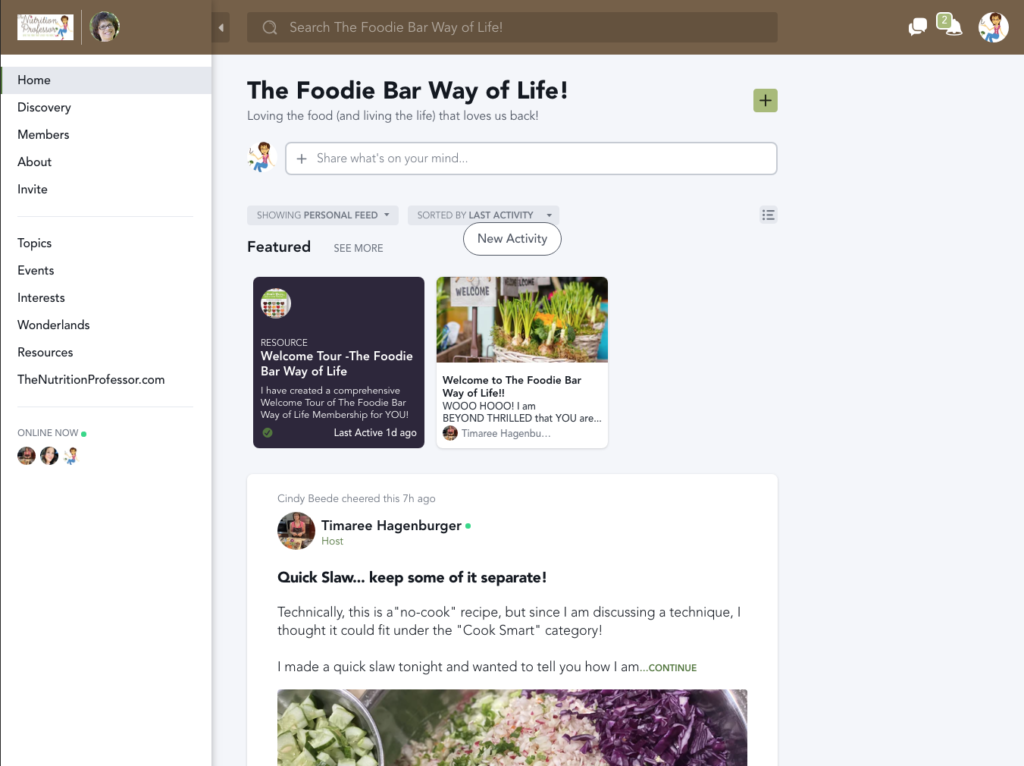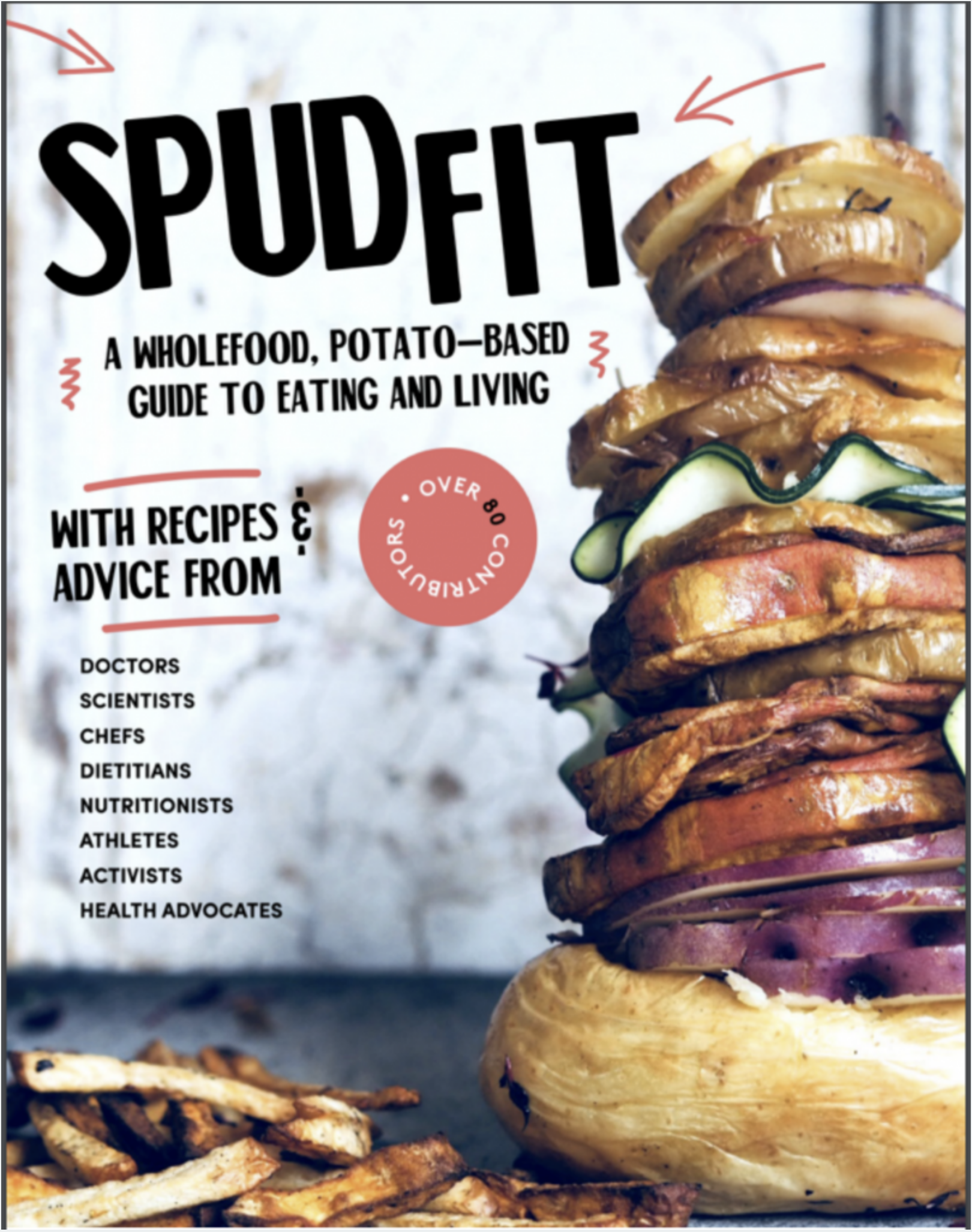While the genesis of this article came from a podcast episode that I recorded recently, (I have my own podcast if you weren’t already aware – “Office Hours with The Nutrition Professor”), this month’s recipe was inspired by an unexpected guest from Thailand who was craving vegetables!
I just attended a wonderful conference called P-POD (Plant-Based Prevention of Disease) in North Carolina, and one of the excellent speakers, Kathy Pollard, MS (www.kathrynpollard.com) shared some of the following fascinating statistics about food waste in the US:
40% of food is never eaten… which is valued at $160-165 billion! While some of the food waste occurs at a retail level (e.g. grocery stores, restaurants), 25% of food/beverages consumers buy gets thrown away (despite the flood of ultra processed products with unbelievably long-shelf lives)! Also, only 5% of the uneaten food is diverted from the landfill for composting and rotting food in landfills is the single largest component of municipal solid waste. Reducing food waste by 15% could feed >25 million people per year, which is significant since 1 in 6 people in the US are considered food insecure (unsure from where their next meal is coming).
Even if you are fortunate enough not to be struggling with hunger or food insecurity at the present time, not only does it just make good sense not to waste food, it will also save you money and time (since prepared food won’t get thrown away)!!!
Kathy Pollard’s talk inspired me to brainstorm some ideas for helping all of us reduce food waste on an individual level. Here are 10 strategies you can put into practice right away (and save money):
1. Use your freezer! Our dedicated freezer is easily one of the best investments we have ever made, and their energy efficiency, especially when keep well stocked, will likely surprise you. We chose a vertical freezer that opens upright, (as opposed to a chest freezer), to help make it easy to access items. I use it extensively! In my freezer, you will find a variety of whole grains, nuts, seeds, soups, sauces, fruit, veggies and cooked legumes, “planned-overs” (instead of leftovers) citrus juice in ice cubes, zest, and ginger and turmeric root (super easy to grate with the microplane when still frozen).
2. Don’t peel those fruits and veggies unless you have to! The only vegetable that I peel is jicama, and the only squash that I don’t eat the peel is spaghetti squash. Some of the most health promoting phytonutrients and fiber are found in or just under the skin of many fruits and veggies, so I choose to eat the skin of all types of potatoes, kiwi, ginger and carrots, just to mention a few that you may have peeled in the past!
3. Meal plan and prep (including planning for “planned-overs”) – When you know what you are planning to make, you won’t buy more than you need. If you just aimlessly put thing in your cart that look good and hope they will somehow come together to form an array of edible meals, you might be disappointed. Regarding “planned-overs” – why not double or triple a chili or soup recipe and plan to divide it into three containers, two for the freezer (label them with masking tape and a sharpie). That way you won’t have to serve it everyday for a week, risking that everyone will get “tired” of it and not want it again for the foreseeable future.
4. Speaking of soup, get comfortable with an “everything but the kitchen sink” recipe to help you clean out the fridge when veggies are looking a bit wilted. You can also create a multi-veggie stir-fry, like the one I made with our foreign exchange student from Thailand this week (see recipe below). Not only was it quick and incredibly delicious, it cleaned out much of my produce drawer!
5. Consider adopting The Foodie Bar™ Way approach to meals. If you end up throwing away casseroles at your house because someone doesn’t like olives or tomatoes, begin to set up your meals like Foodie Bars™, where you have lots of options set out, but everyone assembles their own plate/bowl of food. When I tell someone new about my book, I open it to a picture of my salsa bar, which shows a variety of bowls filled with ingredients for salsa. I explain that if I make the salsa, my daughter won’t eat it because I’d put jalapeño in it, and my son won’t eat it because it would have cilantro. However, if i set out the ingredients and they make their own, everyone’s happy. I have applied that concept to breakfast through dessert and have 32 Foodie Bars (such as loaded potato bar, pasta bar, burrito bowl bar and even dessert nacho bar) and 94 recipes to support those bars. On the back cover of my cookbook, The Foodie Bar™ Way, I explain that it is as if Forks Over Knives was crossed with Chipotle with a sprinkle of The Flavor Bible. If you don’t have a copy of the book, you should definitely get one, either in print or ebook at www.FoodieBars.com
6. Shop smart when it comes to food that ripens. Instead of purchasing a bunch of bananas that will all need to be eaten in the same 24 hour window, why not buy a few green ones, some a bit riper and a few that would be ready to eat that day or the next? The same goes for avocados, stone fruit and pears, just to mention a few. If your bananas, avocado and other fruit is ready before you are, put them in the fridge without washing or slicing them, and it should be at least another day or two before they get too soft. In my cookbook, the Foodie Bar™ Way, I even devote a section to helping you make the produce you purchase last longer, with specific advice for every fresh ingredient in the book! This is a must read if you have ever thrown away rotting fruit that you put in bag to speed the ripening process!
7. Pay attention to food safety! While Kathy’s presentation at the P-POD conference touched on the fact that the most common reasons for food waste in developing countries included poor refrigeration, infrastructure and packaging challenges, I suspect that we waste plenty of food in the US because we don’t minimize the amount of time prepared food is in the temperature danger zone (40ºF-140ºF), when the rate of bacterial growth doubles. Per the USDA’s Food Safety and Inspection Service FSIS website: Storing Leftovers – “One of the most common causes of foodborne illness is improper cooling of cooked foods. Bacteria can be reintroduced to food after it is safely cooked. For this reason leftovers must be put in shallow containers for quick cooling and refrigerated at 40°F or below within two hours.” Reheating – “Foods should be reheated thoroughly to an internal temperature of 165°F or until hot and steaming. In the microwave oven, cover food and rotate so it heats evenly.”
8. Keep your refrigerator closed, at all costs! I know that this sounds silly, but one my of pet peeves is when someone in my family opens the fridge, just to see/think about what they want to eat, as all of the cool air rushes out of the fridge and warm air moves in! An easy fix can be a list of meal ideas and available fruit and veggies that you put on the front of the fridge – on a simple sheet paper or a light dry erase sheet. Don’t list every condiment, just the items that make sense.
9. Be deliberate about where you place items in the fridge. The door will be the warmest, so don’t put homemade dressings there! The back of fridge will be coldest, but some things will freeze if in certain locations, high up or on the side that shares a wall with the freezer. If you happen to have two refrigerators, one the garage, be sure to use it wisely. Don’t just keep drinks in there! I place containers of the food that I am most worried about going bad in our garage fridge, including our beloved Tomato Almond Pesto Sauce, Southwestern Scramble, homemade salad dressing and Cheezie Sauce, as that refrigerator gets opened so infrequently, as compared to the one in the house.
10. Get creative with ingredients! Recently in one of my Facebook groups, someone asked about suggestions for using up a ton of carrots. Carrot muffins and carrot cake came up (both of which are freezable), and I added finding a yummy carrot ginger soup or making my Zippy Citrus Carrot Salad. I also have several additional oil-free stir-fry recipes on my website, but wanted to share this one that I whipped up for our unexpected guest!
Cravin’ Veggies Stir-fry
A foreign exchange student from Thailand stayed with us this past week, when her host family had an emergency. When we were talking about her experiences over the past year, she told me how surprised she was that Americans ate so few vegetables. When she saw that I had a crisper drawer full of veggies ready to prepare for a stir-fry, her face lit up! She said, “I want veggies!” I didn’t follow a recipe, just pulled out the veggies I had, along with some noodles, confident that it would taste great… and it didn’t disappoint! Feel free to substitute any vegetable combinations, just being aware of the order, so that you add the those that take the longest to cook (e.g. onion, carrots, celery) before the veggies that tend to get too soft quickly (e.g. zucchini, baby bell peppers). If veggies were going to throw a party, this would have been a great one!
Ingredients
1 medium red onion, sliced
2 carrots, sliced into rounds
3-4 cloves garlic, pressed/minced*
2 inch piece of ginger, grated frozen (if possible)*
2 bok choy, rinsed well and chopped into bite size pieces (green and white*)
1 medium-large zucchini, diced
1/2 small head of purple cabbage, diced
6-8 colorful baby bell peppers, diced
8-10 oz package of fresh bean sprouts
1/4 cup fresh basil (optional, but delicious)
Season to taste with one of the following (or a combination):
natural rice vinegar, reduced sodium soy sauce, coconut aminos, fresh lemon or lime juice, or some fermented black bean sauce (check labels, as many are high in sodium).
Sesame seeds (black and white) and scallions for garnish (and nutrients!)
Optional: cooked whole grain noodles, brown or purple rice, or quinoa
Procedure
Combine the onion and carrot in a dry skillet over medium heat until they begin to soften, then added garlic and ginger and then add the bok choy and cabbage. After a few minutes, add the zucchini and baby bell peppers. When the veggies are still tender crisp, stir in the bean sprouts, fresh basil. You can season it with any of the suggestions listed above. We added a spoonful of fermented black beans sauce and a splash of unseasoned rice vinegar. We stirred in whole grain brown rice and millet ramen noodles, but this would also be delicious served on top of cooked brown or purple/black rice or quinoa. We sprinkled the dish with black and white sesame seeds and enjoyed every bite.
The Nutrition Professor’s Shop Smart, Prep Smart, Cook Smart, Eat Smart Tips:
*Use all of the bok choy, green leafy part at the top and the entire white “stem”, only discard a thin disc shaped piece that you cut off the very bottom.
*To maximize the health benefits of the garlic, be sure to press or mince your fresh garlic and let it sit for 5-10 minutes before heating or adding acidic ingredients.
*If you keep ginger in the freezer, it will not soften or mold and it will be so easy to grate with a microplane when still frozen, as it will not become fibrous (as it often does when thawed or at refrigerator temperature)
Why not choose one or two of the 10 strategies above and have fun reducing your food waste and saving money? If you’d like to listen to this information (and more) by way of my new podcast – find a link to that specific podcast episode or search for “Office Hours with The Nutrition Professor” on your favorite podcast platform.
Timaree Hagenburger, a plant-based registered dietitian nutritionist (RDN), certified exercise physiologist with a master’s degree in public health, has over 20 years of experience as a nutrition professor. She is a sought after speaker, media personality and author, who works with private clients, and in corporate wellness, has contributed to several cookbooks and published her own cookbook, The Foodie Bar Way: One Meal, Lots of Options, Everyone’s Happy (www.foodiebars.com)! Timaree is also the founder of an incredible online membership community, The Foodie Bar Way of Life, that makes loving the food (and living a life) that loves us back… simple, satisfying, sustainable AND FUN! You can contact her about working with her through 1:1 dietitian nutrition coaching, for hands-on cooking instruction and to inquire about arranging a speaking engagement.


 Order and learn more at www.FoodieBars.com
Order and learn more at www.FoodieBars.com

 This is a first for me... Some of MY recipes are part of a rock star compilation cookbook put together by Andrew Spud Fit Taylor!! Order it today!
This is a first for me... Some of MY recipes are part of a rock star compilation cookbook put together by Andrew Spud Fit Taylor!! Order it today!
i enjoyed your articles very much i’m new to plant base and have a lot excuses